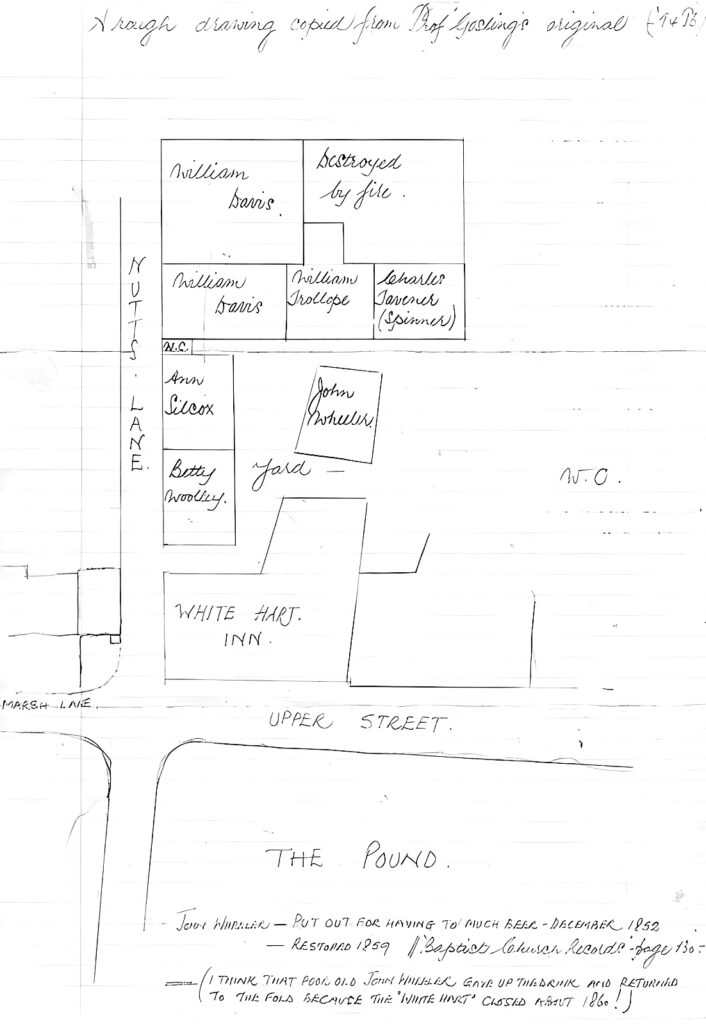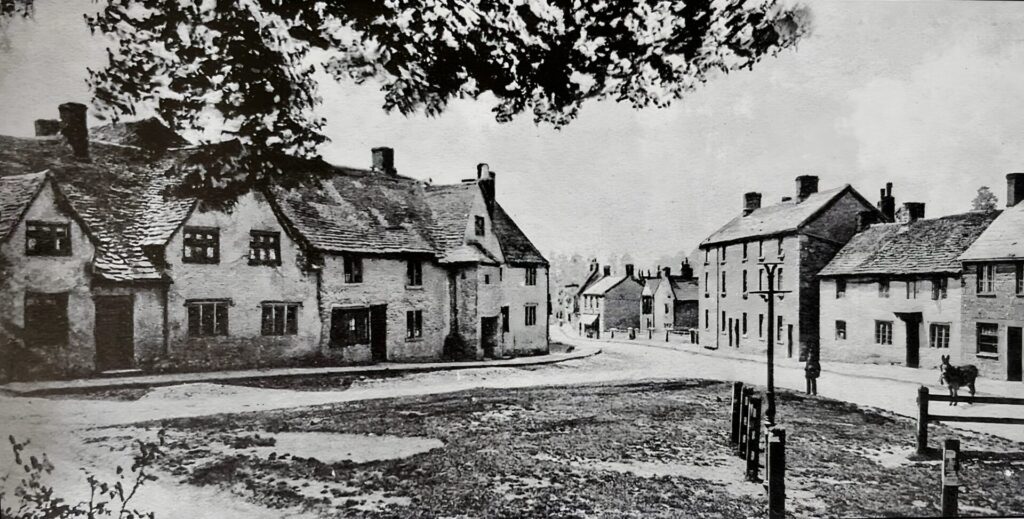The information we have about Gunston’s Lane comes primarily from these documents:
Will of Jonathan Noad dated 1809
also a tenement occupied by Hester Ball also another tenement adjoining occupied by William Lucas the younger and another tenement at the top of a lane called Gunston’s Lane occupied by Edward Gullick which said three tenements belonged to James Barnes also a tenement occupied Robert Scrivener? also another tenement occupied by John Humphreys also another tenement occupied by the widow Powell also another tenement occupied by Mary Noad and also another tenement with the garden thereto belonging occupied by Elijah Richmond which last five tenements are situated in and near the aforesaid lane called Gunstone Lane and were purchased by me of Chichester esq.
Will of John Wheeler (snr.) dated 14th January 1815
I give to my son Edward Wheeler the Front House situated in a Lane called Gunstons Lane in the Parish of Road aforesaid now in the occupation Charles Taverner Spinner also the Ground and Premises thereunto adjoining on which a House was lately burnt down but which is to be rebuilt by money arising from my Estates if I should not survive to do it myself together with one half of the Garden belonging to the said Premises which I lately bought of one Farmer Robins but on this Condition only that he shall not sell or mortgage the same and after his decease if she should survive him then to his Daughter Elizabeth Wheeler and her Heirs but if she should die without Issue lawfully begotten then I give the same to my son Henry Wheeler and his Heirs.

The above rough drawing by “JB” (believed to be John Bryant) in 1994 is a copy of one owned by Professor Gosling on a wall in his house, the White Hart Cottage. It shows the cottage occupied by Charles Taverner and the site of another cottage destroyed by fire mentioned in the will of John Wheeler the elder dated 1815.

The cottage on the left in the above picture (now 38 High St) is thought to be one of the earliest remaining buildings in the village. Some of the joints of the roof timbers indicate that the oldest part is c1400. Originally it was an open hall with an open hearth and a gallery at one end. In the 16th century the main fireplace and chimney were put in and there are a number of other 16th and 17th century features. In the early 18th century it was being used as an inn (the New Inn), owned by William Stevens. And by 1777 it was called the White Hart, occupied by William George, but still owned by the Stevens family.